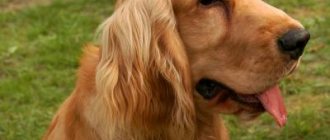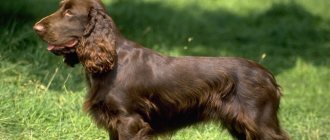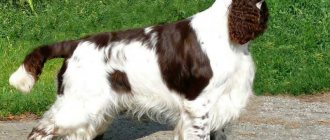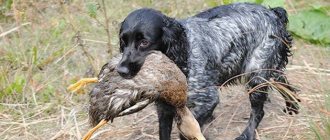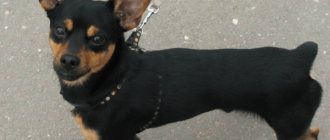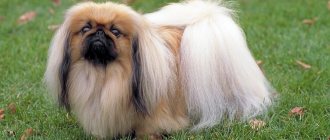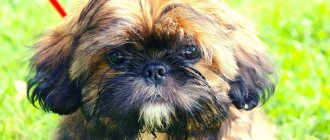Russian spaniels are a hunting breed of gun dogs. These dogs are in great demand among hunters. Spaniels, if they are well trained and trained, will never leave their owner without prey. They simply love active pastime and playing in the fresh air. But are these dogs suitable for apartment living? Let's try to figure it out.
Is it possible to keep a Russian spaniel in an apartment?
It is impossible to answer this question unequivocally. Most dog handlers agree that apartment living is unacceptable for these dogs. Just like the fact that these animals are not suitable for people who have nothing to do with hunting. This is explained by the fact that without the opportunity to hone his skills and constant access to the street, the spaniel will not live long.
Do these opinions have a rational grain? Of course yes. But it is still not worth banning the keeping of these dogs in apartments. If the owner understands that the pet needs physical activity and training, and creates all the conditions for it, then please.
The optimal place for a Russian spaniel to live is considered to be an enclosure located in the courtyard of a private house. There will be room for the dog, there will always be a place to roam and something to chew on. Don't worry that your pet will freeze in winter. Thanks to its dense undercoat, the spaniel is not afraid of bad weather. But the booth in the enclosure still needs to be insulated.
Important! You cannot chain your dog or keep it locked in a barn. It is also worth making sure that the pet has access to the house.
In an apartment or house (even if there is an enclosure in the yard), the pet should have its own place. It is better to place the bed in the far corner, in a dry, quiet and peaceful place. As a sleeping place, you can use a wooden box, a basket, or a textile bedding. The main thing is that the dog fits at full height.
Feeding an adult dog
The owner chooses the type of food for the spaniel. If the dog regularly goes hunting with its owner, then industrial food is a more convenient option. If field conditions are not expected, then natural food can be used. The main thing is that the combination of these two types should be excluded. This can lead to digestive problems.
An adult dog needs to be fed 2 times a day, an hour after a walk. The peculiarity of dogs of this breed is a tendency to obesity. Don't overfeed them.
Your spaniel should always have clean, unboiled water.
Industrial feed
Dry ready-made food or canned food is balanced and contains microelements and vitamins. Choose them carefully. The composition should not include dyes, preservatives, or unfamiliar components. A high content of herbal ingredients does not provide any benefit.
A pronounced aroma and uneven color are signs of low-quality food.
Do not buy dry food in bulk.
Natural diet
Eating natural foods allows you to track the occurrence of allergies.
If a Russian spaniel is kept on a natural diet, then it should additionally receive vitamin complexes. The veterinarian selects them.
The menu for an adult dog should include:
- meat and offal (2/3 of the diet) - beef, lamb, turkey, chicken (white meat), rabbit, horse meat;
- sea fish after heat treatment - hake, cod, haddock, halibut;
- chicken and quail eggs (in the absence of allergies);
- dairy products - cottage cheese, curdled milk, kefir, fermented baked milk, yogurt without sugar and fillers;
- cereals – rice, buckwheat, oatmeal, millet;
- oil – olive, pumpkin, unrefined sunflower;
- vitamin supplements;
- greens - parsley, dill, celery, lettuce;
- vegetables - carrots, zucchini, white cabbage, bell peppers, cucumbers, etc.;
- fruits, including dried fruits.
Food should be fresh, not hot or cold.
Food from your table is not recommended.
- sausages – contain preservatives and flavor enhancers;
- river fish – possibly containing helminths;
- sugar, chocolate and other sweets;
- pasta;
- spices, salt;
- pickled, smoked, fatty foods;
- tubular bones.
How to organize a walk
The owner must remember that a spaniel living in an apartment needs to be walked twice a day. First of all, to cope with natural needs, and secondly, to release accumulated energy. A dog that will not have the opportunity to run outside will spend its unspent energy at home. This will manifest itself in damage to furniture, clothing, shoes and other personal belongings of the owner.
The total duration of the spaniel's stay on the street is at least 3 hours. During walks, the dog should be physically active. You can and should take your pet with you for a run or a bike ride. The best place for this would be a park or forest. In busy places, you should not let your pet off the leash.
Vaccination and veterinary medicine
The first vaccination for spaniels is given at 9 weeks. A few days before this, the puppy is rid of worms. After 1-2 weeks, vaccinations are repeated. Only 10-14 days after the second stage, you can go for the first walk.
At 6-7 months, after a complete change of teeth, the Russian spaniel undergoes the third stage of vaccination. Be sure to have a rabies vaccination - this is one of the most important vaccinations for a hunting dog.
At 12 months, the third stage is repeated.
Then the entire vaccination course is carried out once a year.
It is better to choose a veterinarian before the first vaccination and do not change it throughout the dog’s life.
How to feed
Puppies feed on their mother's milk for the first month of their lives. They start feeding them from the fifth week. To do this, use either natural minced meat or dry food soaked in water. The number of meals is gradually reduced from 6 times a day to 1-2 times.
An adult dog is fed either dry food or natural food. Drying is more suitable for pets who regularly go hunting. Spaniels who do not see field conditions can be offered natural food. It is best to feed the dog after a walk, in the morning and in the evening.
Important! Russian spaniels are big gluttons. Therefore, the owner needs to monitor what and in what quantities his pet eats.
Russian spaniel is the pride of domestic dog handlers
The Russian Spaniel is a gun hunting breed of dog. Its selection began at the dawn of the 20th century, when English cocker and springer spaniels were brought to Russia. The characteristic type of the breed was determined after the Great Patriotic War. And in 1951, the first standard of the Russian spaniel was adopted, which met the requirements of hunters in the USSR.
How to care for your fur
You need to start caring for a Russian Spaniel puppy from the first days he is in the house. The good thing is that it is not difficult to do. These dogs are not capricious and not picky in matters of haircuts, bathing and combing.
To keep the coat in good condition, it is enough to wash the dog once every 2-3 weeks. Using cosmetic oil will help prevent the formation of tangles. It is used to treat hair in the armpit and groin area.
You need to brush your dog several times a week. Soft and hard brushes are suitable for puppies. Older individuals will benefit from long-toothed combs.
A spaniel should be taken to a groomer for an exhibition haircut. If hygiene is needed, then the owner can do it himself. Removal of excess hair on the paws, around the auditory and anal openings is carried out once every 2 weeks. The hair on the back is not cut.
Spaniel care
How does a dog appear in the house? A puppy can be brought by children or picked up on the street by adults, and such an unexpected “acquisition” sometimes takes its owners by surprise. Even experienced dog breeders cannot always predict what will come out of such a surprise. At best, you can predict the future size of the dog, and guess (more than approximately) which breeds took part in creating the “cocktail” running through the puppy’s veins. Expecting successful performances at breed shows from such a dog is the height of optimism, even if the baby looks like a shepherd or a bulldog... But even with the complete absence of exhibition prospects, the new member of your family needs constant care and attention.
What can we say about future champions, for whom constant care is important not only from the point of view of maintaining health, but also as a guarantee of future success. Of course, purchasing a purebred puppy is a deliberate step for which one prepares for a long time by choosing a breed, studying its habits and features of keeping. They prepare for the arrival of a new tenant in the house, almost like for the visit of an august person.
Purchase of inventory
So, you have decided to buy a spaniel. The baby is still warming himself under his mother’s side, looking around with curiosity at the world around him, making his first hesitant attempts to get out of his usual den into the huge room... It’s time to look at the pet supply store and buy everything you need to care for your cocker spaniel. Of course, you will come here more than once for the most necessary ceremonial leash, a new comb (to replace the one chewed up by someone, do you happen to know who?) or an unusual toy, but now is your first “dog shopping” and you need to treat it responsibly . And one more important point: if an Englishman, American or Russian spaniel settles in your house, the care and maintenance of the dog will become a significant item in the family budget. How to care for a spaniel, what do you need to buy?
1. Consider where the place for the dog . This needs to be done right away, but don’t rush to buy fashionable beds or baskets, it will simply be difficult for a small puppy to get into them. It’s better to prepare a small mattress, make a removable cover for it and put it in the selected corner. The place for the dog should not be on the aisle, in the corridor or near heating devices.
2. One of the most striking features of a spaniel is its silky, long coat . To keep it in good condition you will need: a comb with short, fine teeth (slicker), a comb with long, sparse teeth, a brush with soft bristles (this will be needed to care for the coat until the puppy grows up). In general, taking care of the coat is one of the main aspects of caring for and maintaining a cocker spaniel.
3. Place for feeding : bowls for food and water, stand with adjustable height of bowls.
4. If you plan to cut your spaniel's hair yourself, stock up on grooming tools : simple and thinning scissors, a special dog clipper and a lot of patience.
5. Grooming products : shampoos and conditioners. In general, you should not overuse bathing dogs with detergents, as this leads to a deterioration in the condition of the coat and the appearance of dandruff. However, spaniels are hunting dogs, and for them to be covered in some nasty stuff is about the same as for a woman to be sprayed with expensive perfume. And then you can’t do without swimming.
6. Equipment for walking : leash and collar. Instead of a collar, you can use a harness. Try not to let a young dog walk without a leash until it learns to clearly follow commands, especially “Come!” The hunting instincts of spaniels can play a cruel joke here too - very often a young dog, carried away by an interesting smell, discovers the absence of its owner too late. It’s good if the consequences are limited to a few minutes of hassle.
Spaniel ear care products : cotton swabs and pads, three percent hydrogen peroxide solution.
8. Nail care products : nail clipper and nail file.
Grooming
Grooming is one of the most labor-intensive procedures when keeping a spaniel. Soft, silky wool, so pleasant to the touch, has a very unpleasant property - it rolls into tangles. Most often, these matted lumps form behind the ears and in the groin area. Separating mats is a labor-intensive process, sometimes painful for the dog. To remove them, you can use a special tool that resembles a comb with blades built between the teeth. In the most hopeless cases, you have to cut off the tightly matted hair, but this is really an extreme case and does not decorate the dog’s hairstyle. The only way to prevent tangles from forming is by daily combing. Don’t forget to examine your dog after every walk and clean out any debris, twigs, or plant seeds stuck in the fur. These “finds” can become the center of mat formation.
The little puppy has very short fur and very delicate skin. The teeth of a comb can scratch the skin, but a brush with not very stiff bristles will not only perfectly clean the fur of debris, but will also help accustom the baby to the procedure itself.
The most difficult coat to care for is the American Cocker Spaniel. After all, the decorative apron and skirt of this aristocrat serve as an excellent collection of plant debris during a walk, and it is quite difficult to untangle all this from long silky strands. And the creation of this beauty will require the services of a professional groomer, or the owner acquiring a new profession as a dog groomer.
At about six months of age, the puppy fluff is completely rejected and is replaced by the classic “silk” coat of the spaniel. Dead hair must be removed (trimmed). For this purpose, a “slicker” with short, frequent teeth is used. Move the comb in smooth movements along the growth of the coat, from the base of the head to the tail, first treat the back, then the sides, chest, belly and paws. If you do this regularly, this type of care for your cocker spaniel will bring great pleasure to the dog. Very soon the dog will begin to turn his sides, roll over on his back and stretch out his paws at the sight of his favorite comb. Just don’t forget to put the tool away after finishing the procedure, for some reason the handles of the combs seem very tasty to puppies...
If you get an American Cocker Spaniel, grooming should become a daily routine, just like brushing teeth and washing your face for its owner. Caring for an English Cocker Spaniel is somewhat simpler, although trimming is necessary for all representatives of the spaniel tribe. Only this will allow you to get that smooth, silky coat that is prescribed by breed standards. Be sure to comb at least twice a week and clean the coat of debris after walks. If necessary, bathing.
Caring for a Russian spaniel differs little from the procedures prescribed for an “Englishman”. Except that a working dog may need to bathe more often during the hunting season.
Take the time to care for and maintain the coat.
Ear care
The charming long ears of spaniels are a kind of “calling card” of the breed. It is believed that the length of the ears should be sufficient so that they can be connected at the tip of the dog's nose. Moreover, the ears themselves, and not the fur decorating them. However, this beauty also has its downsides. Inflammation of the middle ear is one of the typical breed diseases. This is due to poor ventilation, which leads to the creation of favorable conditions for the development of pathogenic microorganisms.
How to protect your pet from illness? Try to prevent moisture from entering the ear canal. Before bathing, cover your ears with cotton balls soaked in vegetable oil; if moisture still gets into the ear, carefully dry it with a cotton swab. Regularly inspect your ears for wax build-up and mites.
Carefully monitor your dog’s behavior; if signs of an ear infection appear (if the dog constantly scratches its ears, shakes its head, if squelching sounds and an unpleasant odor appear in the ear), be sure to contact a specialist.
It is especially necessary to carefully examine the ears of working dogs that carry game from the water while hunting. How to care for a Russian spaniel that regularly swims in natural bodies of water? The principle is the same: after the hunt, examine the dog at home, check the fur and ears for parasites, and dry the water if necessary. At the first sign of problems, contact your veterinarian. Your Russian Cocker Spaniel will appreciate this care for its beautiful appearance, active work and cheerful mood.
Nail care
For dogs that regularly go on long walks on asphalt or rocky roads, nails usually do not pose a problem. However, it is necessary to have a nail clipper in your household equipment even in this case - there is always a possibility of damage to the claw, it can break or split. In addition, you always have to trim the claws on the fifth hidden toes, which are not involved in the dog’s movement.
How to care for a cocker spaniel that travels mainly around the apartment, or mainly on soft forest and swampy soil, its nails must be trimmed regularly. For this, a special dog nail clipper is used, which the store will help you choose depending on the size of the dog (and, therefore, the size and strength of the claw). Your puppy's nails should be trimmed from an early age. The length of the claw should not extend beyond the surface of the pads on the paw. It is necessary to cut carefully so as not to damage the blood vessels. Overgrown claws are not only unsightly, but can also lead to injury. Sharp edges must be filed after trimming.
How magnificent an American or English cocker spaniel looks, the care and maintenance of which are at the proper level, how active and diligent a Russian spaniel is - caring for a dog is not easy, but the result will pay off your efforts many times over.
